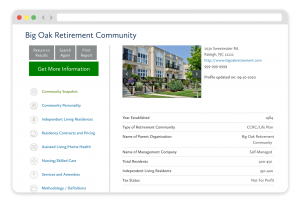
The concept of senior co-ops originated in the Midwest in the late 1970s, and the majority of these communities are currently located in Minnesota and Iowa. However, as the Baby Boomer generation continues to retire, co-ops may become more plentiful nationwide.
Co-op communities can exist in rural, suburban, or urban settings, and feature all types of housing—single-family, multi-family, townhomes, apartments, etc.—as well as common areas for social activities. Regardless of location, co-ops are designed to make senior living more affordable because expenses related to the community’s operation and maintenance are shared by the residents.
Senior co-op costs
Although there are a variety of ways that co-ops may be financially structured, typically, the cooperative holds the community’s master mortgage and residents purchase a share of the cooperative to occupy their unit within the community. In addition, there is a monthly payment to cover all maintenance costs and repairs. Although residents do not assume personal liability for the master mortgage, they are generally still considered homeowners and may be entitled to deduct from their income taxes their share of interest on the mortgage, as well as property taxes.
Co-op shares can appreciate in value on a limited basis–usually 1 to 2 percent per year. This is intentional because it helps keep units affordable and marketable to new residents. The reason this is important is because one drawback of co-ops is that residents continue to be responsible for paying the monthly fee until the vacated residence has been reoccupied. If you decide to sell, the cooperative may buy the unit, or help you market and sell it. Following the sale, you will receive your share cost, and any accrued equity.
Operation
A senior co-op operates according to a set of bylaws and agreements that are monitored by an elected board of directors, similar to a traditional homeowners’ association (HOA). Each unit or share has one vote, and only residents of the community may serve on the board. Daily operation may be managed by an outside company, hired at the board’s discretion.
Co-op amenities and services
Amenities and services vary, but usually include communal kitchen and activity areas; indoor, heated parking; on-site transportation; gardens; laundry facilities; fitness center; library; and guest rooms. In addition, the community will offer an array of social activities, from movie nights and book clubs, to field trips and continuing education opportunities. If residents require assistive care, the cooperative can obtain those services from sources outside of the community at an additional cost, but unlike a continuing care retirement community (CCRC), there are no healthcare facilities on site at the co-op.
Considering your senior living options?
Take a look at our Retirement Living Navigation Chart to help you determine which option works best for your needs.

FREE Detailed Profile Reports on CCRCs/Life Plan Communities
Search Communities





